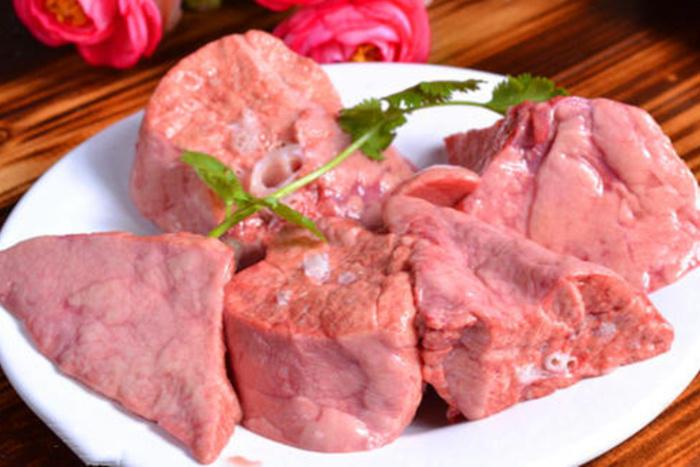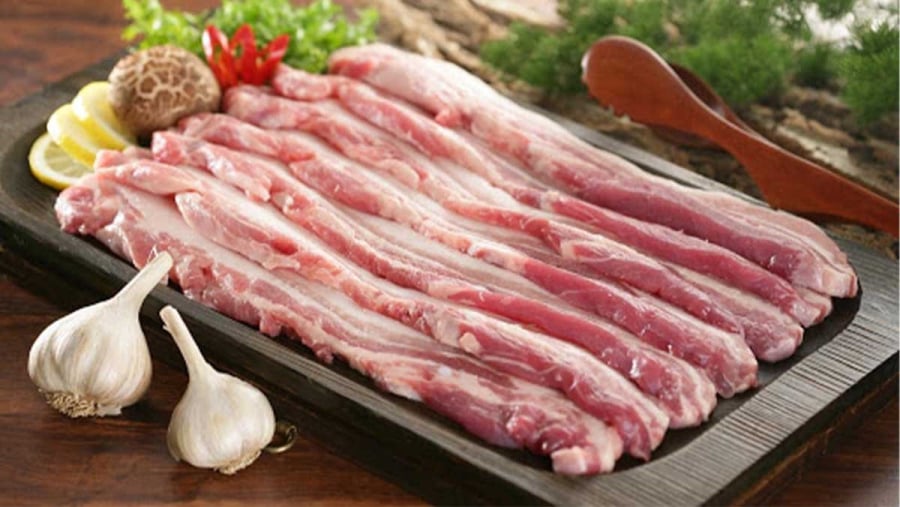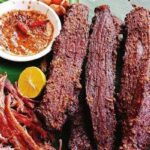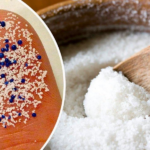Pork Lungs: The Body’s “Dust Bag”, Hiding Potential Risks
Among the variety of animal organs used in Vietnamese cuisine, pork lungs are often overlooked, not because they are unfamiliar to cooks, but due to serious warnings about their potential uncleanliness and toxins.
As the primary respiratory organ, a pig’s lungs are constantly exposed to polluted air, dust, bacteria, and even parasites throughout its lifetime. Its sponge-like structure makes thorough cleaning extremely challenging, allowing for the easy retention of dirt and bacteria, even after careful preparation.

Numerous studies indicate that pork lungs can harbor dangerous microorganisms, such as tuberculosis bacteria, lung flukes, or other parasites. Consuming undercooked lungs or those prepared under unsanitary conditions can lead to infections, digestive disorders, and increased risk of respiratory illnesses.
Even when purchased from familiar meat stalls, if the source and hygienic slaughtering process cannot be ensured, pork lungs should be the first item removed from your shopping basket.
Why Do People Still Choose Pork Lungs?
In reality, pork lungs are often sold at very low prices, sometimes only a few thousand dong each. In difficult economic times, some families still opt to use pork lungs for soups or rustic dishes such as lung salad or stir-fried lungs with lemongrass and chili…
However, nutritionists and veterinary doctors alike advise: consider the trade-off between temporary savings and long-term health risks. With the same amount of money, you can choose cleaner, safer, and equally nutritious meat options.
The Three “Golden” Parts of a Pig: Clean, Tasty, and Worth the Money
If you’re wondering which parts of the pig to choose for both taste and safety, here are three timeless suggestions:
Three-layer meat: This cut of meat, which alternates between lean and fat, is tender, fatty, and incredibly versatile. It is the go-to choice for braised, grilled, or fried dishes. Additionally, its freshness can be easily determined through its color and elasticity.
Shoulder meat: With a slight chewiness, natural sweetness, and a touch of fat, this cut is perfect for making sausage meat, minced meat, or for cooking with noodles and soups. It’s also more affordable than leg or loin meat.
Loin: Being the leanest, least fatty, and most tender part, it is ideal for stir-frying, sautéing, or steaming. Although slightly pricier, loin is a reliable choice for a nutritious meal.
How to Identify Fresh Pork When Shopping

Choosing the right cut of meat is just the first step – it’s even more important to know how to distinguish fresh, clean, and safe pork. Here are five essential tips to keep in mind:
Color: Fresh pork has a light to dark pink hue. Avoid meat with abnormal greenish spots, strange odors, or excessive liquid.
Elasticity: Press the meat with your finger – if it bounces back well and doesn’t feel soggy or soft, it’s likely fresh. Meat that is past its prime often feels soggy, wet, and slippery.
Shop in the early morning: 6 am to 8 am is the ideal time to buy fresh meat. After 10 am, the meat starts to lose its freshness and is more prone to spoilage due to the outdoor temperature.
Choose a reputable vendor: Prioritize purchasing from vendors with clear health inspection certificates, who wear gloves, use clean knives and chopping boards, and have a fly-free sales area.
Select the right cut for your dish: Each recipe requires a specific cut of meat. Knowing your cooking intentions will help you buy the right type and avoid waste.
Proper Meat Storage – Ensuring Your Family’s Safety
After purchasing meat, rinse it lightly with diluted salt water, pat it dry, and divide it into smaller portions for gradual consumption. If not using immediately, store the meat in the freezer at -18°C. When defrosting, place it in the fridge overnight instead of soaking it in hot water to preserve its nutritional value.
Most importantly, always cook meat thoroughly, especially when serving children or the elderly. Avoid rare dishes, salads, or unsterilized offal – this is the most practical way to safeguard your family’s health.
The Ultimate Spice Blend: Unveiling the Secret to Vietnam’s Culinary Magic
Introducing the two essential spices, packed with microplastic particles, that are indispensable in any Vietnamese kitchen. These spices are beloved by locals for their unique ability to elevate any dish with their distinct flavors. With just a sprinkle, they can transform mundane meals into culinary masterpieces. But are we really aware of the hidden dangers lurking in these seemingly innocent spices? It’s time to uncover the truth and make informed choices for a healthier future.



































